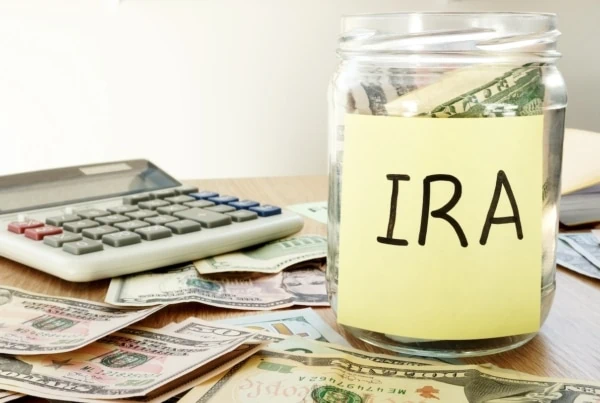The humble 401(k) is among America’s best-known types of retirement accounts. Indeed, it has become the default retirement vehicle at most workplaces—and as a result, it’s often the first retirement account many Americans will contribute to during their lives.
There’s plenty to like, from deferred taxation to a streamlined set of investment choices to the ability for companies to match some employee contributions.
But the 401(k) is far from perfect.
While I normally laud this retirement account, today, I’m going to look at some of the biggest disadvantages of the 401(k). This isn’t to convince you not to use them—quite the opposite. By understanding both the strengths and weaknesses of the 401(k) (or any investment account) you’ll be better equipped to decide when you should and shouldn’t use it.
I’ll also outline a few popular alternatives that you can put to use for any instance where a 401(k) won’t do.
The information and analysis contained within this article appears for your consideration, but it does not constitute individualized financial advice. Always act at your own discretion.
Benefits of a 401(k)
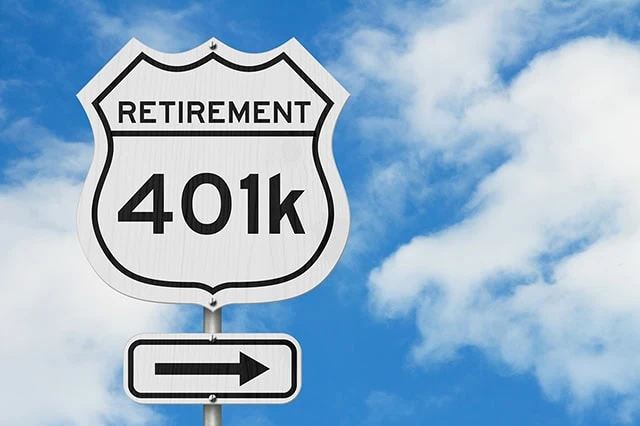
Before we dive into the 401(k)’s downsides, let’s briefly review what the 401(k) has to offer:
- Employers make it easy to elect into this workplace account. You usually fill out an enrollment form, then set up your preferences via an online portal. Some workplaces automatically enroll employees in these plans unless the employee elects to opt out.
- The vast majority of companies that offer a 401(k) also provide some level of employer match, in which the employer contributes funds when you do (up to some dollar or percentage limit).
- Some employers will contribute to your 401(k) regardless of whether you do.
- The 401(k) is tax-deferred. That is, they’re funded with pretax dollars (your earnings before taxes are taken out), and money in the account is allowed to grow without tax consequences. The only time you’re taxed on the money is when you withdraw it. You generally avoid penalties if you withdraw the money at or after age 59½, though other circumstances exempt you from penalties, too.
- Note: You may have access to a Roth 401(k), which is funded with posttax dollars (your earnings after taxes are taken out). The money in the account still grows without tax consequences, and you are not taxed when you withdraw the money. Contributions can generally be withdrawn at any time. Once you own your Roth for five years, earnings can be withdrawn without penalty at or after age 59½, though other circumstances exempt you from penalties, too.
- Contributions are automatically deducted from your paycheck with no work on your end.
- You decide how contributions will be allocated—say, 50% to Fund A, 25% to Fund B, and 25% to Fund C. Every time a contribution is made, the 401(k) account will automatically allocate your money to those funds based on those levels.
Do you want to get serious about saving and planning for retirement? Sign up for Retire With Riley, Young and the Invested’s free retirement planning newsletter.
Downsides of a 401(k)
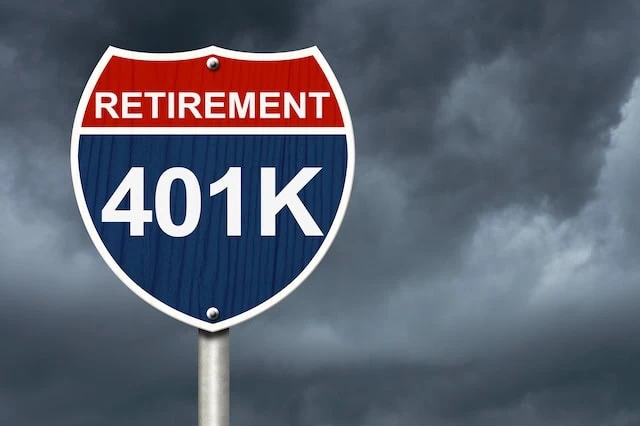
The ultimate size of your retirement savings depends on how much you save and what you invest in, sure. But where you store your money is a significant factor, too—it will affect what you’ll be able to invest in, as well as how your savings will be taxed.
The following are the disadvantages to investing in a 401(k). None of this is to say a 401(k) is a bad place to build your nest egg—far from it. Instead, this should educate your decision on how much of your retirement savings should be locked up in a 401(k), as well as how you use your 401(k) in concert with other account types.
1. Investment Options Are Limited

Your typical 401(k) will allow you to choose from a predetermined set of anywhere between 10 and 20 mutual funds. That’s about it.
As I mentioned before, this lack of breadth is actually a positive in that it simplifies your decision and helps prevent “analysis paralysis.” Plus, the funds on offer will generally cover all the major asset classes and investing strategies, allowing you to build a core portfolio of stocks and bonds that can range the gamut, from aggressively growthy to downright protective.
Still, for some, 401(k)s’ slight offerings can feel limiting, especially compared to a brokerage account or even a similarly tax-deferred IRA, where you may also buy individual stocks and bonds, exchange-traded funds (ETFs), closed-end funds (CEFs), and other assets, and where you can even engage in direct indexing (very briefly, it’s similar to index investing, but you hold the individual components of an index in a much more customizable way).
You’ll also be limited to strictly buy-and-hold investing in a 401(k)—they don’t let you trade options nor futures. Even if you wanted to try to swing-trade mutual funds, 401(k) platforms really aren’t set up for the job.
It’s possible 401(k) exposure will widen at least somewhat, with the current presidential administration taking the opening steps to eventually allow 401(k)s to invest in private equity, and also taking a slightly warmer policy stance on allowing crypto in 401(k)s.
Related: How to Invest for (And in) Retirement: Strategies + Investment Options
2. 401(k)s Have Early Withdrawal Penalties

You generally can’t withdraw money from a traditional 401(k) before you reach age 59½ unless you’re willing to pay a 10% penalty in addition to the taxes you’d owe on the withdrawal regardless. There are exceptions to the penalty on early distributions, such as the Rule of 55 and Rule 72(t), as well as certain situations such as buying a home for the first time … but otherwise, you’re paying the piper.
This weakness isn’t exclusive to 401(k)s, of course—IRAs have similar stipulations.
Similarly, if you have a Roth 401(k), you can withdraw contributions at any age without paying any taxes or penalties, but you may face taxes and penalties on withdrawn earnings. For example: You have $40,000 in a Roth 401(k); while $36,000 (90%) of that money is contributions, $4,000 (10%) of it is earnings. If you withdraw $20,000 from your 401(k) early, 10% of that ($2,000) would come from earnings, and thus be taxed as ordinary income and face a 10% early withdrawal penalty.
Roth IRAs have similar taxation rules, but with a few differences. Among them? Unlike Roth 401(k)s, Roth IRA withdrawals aren’t “prorated”—that is, it’s not broken down by percentage of contributions and earnings. Instead, it’s assumed that distributions first come from contributions, then from earnings. So that same $20,000 early withdrawal would include zero earnings and thus not be subject to tax.
Related: Rule of 55 vs Rule 72(t): What’s the Difference?
3. Traditional 401(k)s Are Subject to RMDs
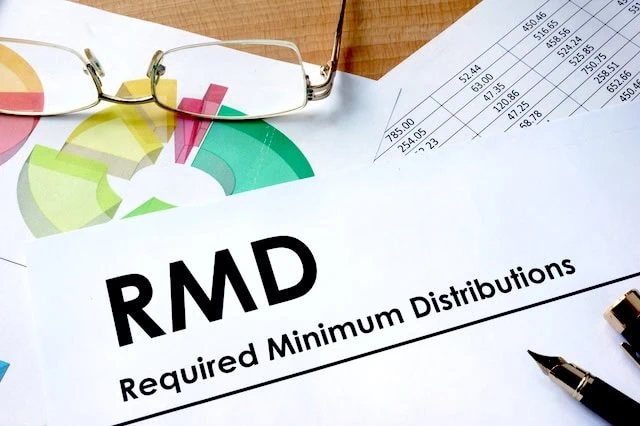
Required minimum distributions (RMDs) are funds you’re required to take out of certain retirement accounts every year once you reach a certain age. Currently, that age is 73, but it will increase to 75 in 2033.
Traditional 401(k)s are subject to RMDs.
Why are RMDs a drawback? Investors must take these distributions whether they need them or not. If you’re withdrawing money you don’t need, you’re unnecessarily halting the growth of that money. Generally, the longer you can let money grow in a retirement account, the better. Additionally, RMDs are taxed as ordinary income. And not taking RMDs on time, or not withdrawing enough money, can result in hefty tax penalties.
Again, RMDs aren’t unique to 401(k)s—traditional IRAs require them, too. However, Roth 401(k) and Roth IRAs don’t have RMDs. Other accounts, such as taxable brokerages and health savings accounts (HSAs), don’t have RMDs, either.
Related: Want to Reduce Your Required Minimum Distributions? Here’s How
4. 401(k)s Charge Fees

The fees associated with 401(k) plans can be broken into two categories: investment-level fees and account-level fees.
Whenever you buy an investment fund (whether that’s a mutual fund, ETF, or CEF) in any account, you’ll generally have to pay certain fees. Most commonly, you’ll pay an underlying “expense ratio” (the annual cost of investing in a certain fund) that’s taken directly out of the fund’s performance.
However, 401(k) plans often also charge account-level fees—typically “plan administration fees,” which the Department of Labor describes as “expenses for basic and necessary administrative services, such as plan recordkeeping, accounting, legal, and trustee services.”
In contrast, when buying investments in an IRA, brokerage account, and other types of accounts, you often won’t pay any account-level fees. You’ll still pay expense ratios on funds, but you’ll probably also have the option to buy stocks and bonds, which have no ongoing expenses.
I should note one fee advantage of 401(k)s, and that’s sales charges. If you buy a mutual fund in an IRA or brokerage account, the provider might charge you an upfront fee that’s a percentage of your initial purchase (known as a “sales charge” or “sales load”). But you won’t pay this fee when buying mutual funds in a 401(k).
Related: 5 Critical ‘Last-Mile’ Steps Before Retirement
5. Employer Contributions May Have a Vesting Period
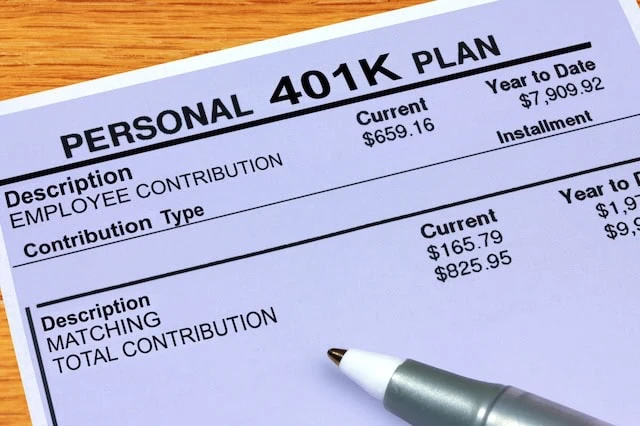
Some employers use vesting—where you earn something over a period of time, rather than right away—as a way to encourage workers to stay at their company longer.
Once an employee is 100% vested, the employer can’t take those funds back for any reason. However, unvested amounts can be forfeited by employees if they’re laid off or fired or if they don’t work more than 500 hours in a year for five years.
Different companies use different vesting schedules. But here are two examples:
- Your company has a three-year cliff vesting schedule. You are 0% vested until you reach three full years of employment, at which point you are 100% vested. Your employer contributes $1,000 to your account on your first day of work. If you leave in one year, you get $0 of those contributions. If you leave in two years, you get $0 of those contributions. If you leave in three years, you get $1,000 of those contributions. If you leave in four years, you get $1,000 of those contributions.
- Your company has a four-year graded vesting schedule. You are 25% vested after the first year, 50% vested after the second year, 75% vested after the third year, and 100% vested after the fourth year. Your employer contributes $1,000 to your account on your first day of work. If you leave in one day, you get $0 of those contributions. If you leave in one year, you get $250 of those contributions. If you leave in two years, you get $500 of those contributions. If you leave in three years, you get $750 of those contributions. If you leave in four years, you get $1,000 of those contributions.
In short: 401(k) vesting makes it possible for you to lose some of your employer contributions.
The good news is that a worker’s own contributions are always entirely vested. Plus, some employers have no vesting period and funds are immediately vested. No matter what, federal law requires workers to be completely vested by the time they reach what the plan considers “normal retirement age” regardless of whether they’ve met the standard vesting schedule.
Related: Should You Tap Into Retirement Savings After a Layoff?
6. 401(k)s Have Annual Contribution Limits

For what it’s worth, this is a pretty mild weakness. Virtually all tax-advantaged retirement accounts have annual contribution limits, and 401(k) limits are quite high by comparison.
The 2025 employee contribution limit for a 401(k) (as well as for a 403(b), governmental 457 plan, or federal government Thrift Savings Plan) is $23,500. Employees age 50 to 59 or 64 and older qualify for additional “catch-up” contributions of up to $7,500 (so, $31,000 total). Workers who are age 60 to63 qualify for super catch-up contributions of $11,250 (so, $34,750 total).
This is significantly higher than the IRA annual contribution limit of $7,000 and catch-up contribution of $1,000 for people age 50+.
Still, in this regard, a 401(k) is actually inferior to a taxable brokerage account, which has no contribution limits whatsoever.
Related: You May Want to Skip These Popular Retirement Rules
How Else Can I Save for Retirement?

When it comes to what workplace retirement plan you use to save for retirement … well, you don’t have much of an option. Whatever your job offers, that’s what you get.
However, there are still many ways to invest on your own, both in tax-advantaged retirement accounts and elsewhere.
This is a brief list (read: not comprehensive) of some of the most popular vehicles that let you build up your nest egg.
Individual Retirement Account (IRA)

I’ve mentioned IRAs a few times, but a quick review:
Individual retirement accounts are … well, exactly what the name suggests. There are a few types, among them:
- Traditional IRAs (personal accounts, tax-deferred)
- Roth IRAs (personal accounts, tax-exempt)
- Simplified Employee Pension (SEP) IRAs (workplace accounts for self-employed individuals and small businesses, tax-deferred
- Savings Incentive Match Plan for Employees (SIMPLE) IRAs (workplace accounts for small businesses with 100 or fewer employees, tax-deferred
If you have a 401(k) through your employer, your alternatives outside of the workplace are traditional and Roth IRAs. You can own multiple IRAs, of one type or both, but the annual contribution limit is shared between/among them. Let’s say you have a traditional IRA and a Roth IRA, and the $7,000 annual contribution limit applies—you could put $7,000 in one and not the other, or $4,000 in one and $3,000 in the other, or any other combination that adds up to $7,000. Contributions also can’t exceed the income you earned that year.
Roth IRAs also have annual income limits. The amount you can contribute starts to phase out at a certain income threshold, then phases out entirely once you reach another income threshold. So depending on your income, you might be able to make a full contribution, partial contribution, or no contribution at all.
If you’ve mostly saved in 401(k)s and traditional IRAs but want to fund a Roth IRA with more than the annual limit, you may be able to do so through Roth conversion (or if you earn too much money, a backdoor Roth conversion.)
Related: Is a Roth Conversion Worth the Tax Bill? What to Weigh Before You Act
Health Savings Account (HSA)

Health savings accounts (HSAs) can be offered by your workplace, but you can also own one outside of your workplace. Ant these accounts, which can serve more than one purpose, are said to have a “triple tax advantage”:
- Participants contribute pretax dollars (or after-tax dollars that they then deduct on their taxes).
- Funds can be invested and tax-free inside of the account.
- Funds withdrawn for qualifying medical expenses are not subject to taxation.
While HSAs have “health” in their name, and while they primarily exist to provide a benefit for health spending, you can spend that money elsewhere. If you withdraw funds for nonqualified expenses before you reach age 65, that money will be subject to income taxes and a 20% tax penalty. However, at age 65, withdrawals for nonqualified expenses are merely taxed (not penalized) … which at that point is similar treatment to an IRA.
No wonder, then, that some people actually use their HSA like an extra IRA.
But again, not everybody is eligible to contribute to an HSA. To do so, you must meet the following requirements:
- Be covered under an eligible high-deductible health plan (HDHP) as of the first of the month (check with your health insurance company if your plan qualifies)
- Have no other health coverage (exceptions apply)
- Not be claimed as a dependent on someone else’s tax return
- Not be enrolled in Medicare.
For those who qualify, an HSA can be a great supplement to your other retirement accounts.
Related: 6 Common HSA Mistakes to Avoid
Taxable Brokerage Accounts
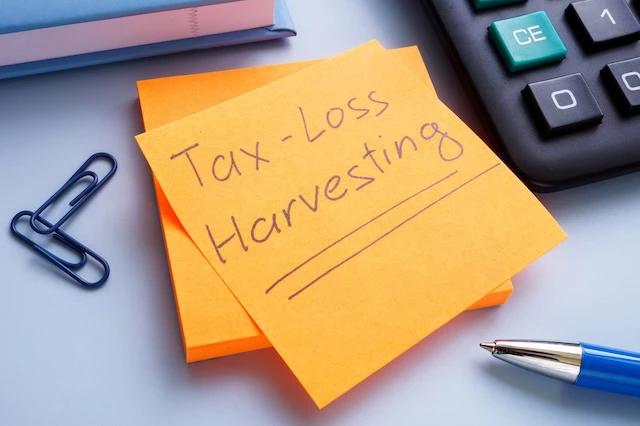
Taxable brokerage accounts, as the name implies, have no tax advantages. You use after-tax money to fund them, and events such as generating taxable gains, or receiving dividend or interest income, have tax consequences. Withdrawals aren’t taxed, but only because that money was taxed in the first place.
But they’re the most flexible of investment accounts.
Brokerage accounts have the widest availability of investment types—stocks, bonds, all sorts of funds, futures, options, foreign exchange, you name it. Direct indexing is in play. Also, taxable brokerage accounts have zero contribution limits; you can pour in as much money as you want.
Lastly, you can limit tax damage through a process called tax-loss harvesting, though this process is best executed by a professional financial advisor.
Related: How Much Money Do You Need to Work With a Financial Advisor?
Alternative Investments

While you theoretically could use alternative investments to retire without investing in the stock market, they’re best used as a complement to traditional investments (stocks, bonds, and funds that invest in stocks and/or bonds).
Alternative investments are a broad category that includes everything from real estate and privately held businesses to metals, cryptocurrency and collectibles.
Why “alts”? Well, they can provide returns that aren’t correlated to the financial markets, potentially providing protection when stocks and bonds aren’t cooperating. And some alternatives may be able to generate high returns. Just understand that alternatives can also carry high risk, and depending on the investment, your funds might be locked in for a predetermined (and possibly long) amount of time. Also, the process might not be as straightforward as investing in the stock market, research materials might be few and far between, and investing might require a prohibitively high minimum investment.
All of this is to say: You shouldn’t go all-in on any investment, and certainly not an alternative investment. But many financial professionals suggest having a small (5% to 10%) allocation to alts.
Want to talk more about your financial goals or concerns? Our services include comprehensive financial planning, investment management, estate planning, taxes, and more! Schedule a call with Riley to discuss what you need, and what we can do for you.







